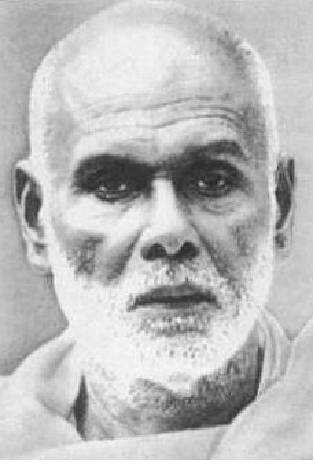04 Jan Shri Narayana Guru: A Spiritual Icon Who Redefined Social Boundaries
SYLLABUS MAPPING:
GS-1-History and culture-Shri Narayana Guru: A Spiritual Icon Who Redefined Social Boundaries
FOR PRELIMS:
Who was Sree Narayana Guru, and what were his main contributions to social reform in Kerala?
FOR MAINS
Significant contribution of Sree Narayana Guru in social reform in India and its impacts on India’s freedom movement
Why in the news?
Shri Narayana Guru:
1. Born: August 20, 1856, in Chempazhanthy, Kerala, into an Ezhava family, which was considered part of the lower caste in the caste-ridden society of Kerala.
2. Early Education: Studied under Chempazhanthi Mootha Pillai in the traditional gurukula system, where he was introduced to the basics of various disciplines.
3. Further Studies: At the age of 21, he studied Sanskrit, Vedas, and Upanishads under the guidance of Raman Pillai Asan, expanding his spiritual knowledge and intellectual capabilities.
4. Spiritual Travels: Traveled across Kerala and Tamil Nadu, meeting prominent reformers like Chattampi Swamikal. During this period, he also learned yoga and meditation from Ayyavu Swamikal, deepening his spiritual practices.
5. Meditation & Enlightenment: For eight years, he meditated in the Pillathadam cave at Maruthwamala, a secluded area surrounded by dense forests, where he attained spiritual enlightenment and clarity about the social inequalities of the time.
6. Social Reformer: This period marked his transformation into a social reformer. He began advocating for equality, education, and spiritual freedom for the oppressed castes, challenging the rigid caste system and the social injustices that prevailed in Kerala society.

Shri Narayana Guru’s contribution:
1. Social Reforms:
Fighting Caste Discrimination: Guru promoted equality for all, famously stating, “One caste, one religion, and one god for all.” He led a movement against caste discrimination and untouchability in Kerala.
Aruvippuram Pratishta (1888): By consecrating a Shiva idol at Aruvippuram, Guru challenged Brahminical traditions and broke caste barriers, marking a pivotal moment in social reform.
Inclusive Temples: He built temples accessible to all castes, making spiritual spaces open to everyone, regardless of social status.
Education for All: Guru focused on providing education to the marginalized, founding schools that emphasized enlightenment for the oppressed communities.
2. Freedom Movement:
Influence on Gandhi: Guru’s fight against untouchability inspired Mahatma Gandhi. Gandhi’s efforts to eradicate untouchability were strongly influenced by Guru’s ideas.
Vaikom Satyagraha (1924): Guru’s disciples played a key role in the Vaikom Satyagraha, demanding the right for lower castes to access temple roads, a successful struggle for social justice.
Sivagiri Pilgrimage: Guru’s legacy lives on through the Sivagiri Pilgrimage, a significant event that continues to promote social justice and spiritual harmony.
3. Literary Work:
Philosophical and Spiritual Writings: Guru’s major works, including “Atmopadesa Śatakam”, convey profound spiritual teachings based on Advaita Vedanta and emphasize compassion, truth, and unity.
Translations and Interpretations: He translated important works like the Thirukural and Ishavasya Upanishad, interpreting them in line with his vision of universal truth and spiritual equality.
Timeless Influence: His writings continue to inspire thinkers and spiritual leaders, promoting peace, love, and unity across religious and social boundaries.
4. Other Contributions:
All Religions Conference (1923): Guru hosted India’s first interfaith conference, advocating for religious harmony and peaceful coexistence during a time of increasing communal tensions.
Promotion of Industrialization: He supported industrial and agricultural growth, emphasizing the importance of development for social progress.
Inclusive Spirituality: Guru initiated followers from all religions, emphasizing that the truth of spirituality transcends religious barriers.
5. Legacy:
SNDP Yogam: Founded by Guru in 1903, the Sree Narayana Dharma Paripalana Yogam remains a major organization advocating social equality and education.
Statues and Memorials: Monuments and statues in his honour, such as the one in Kaithamukku, Thiruvananthapuram, continue to remind people of his contributions.
Commemorative Stamps and Coins: Guru’s legacy is celebrated with commemorative stamps and coins, including one issued by the Government of India and one by Sri Lanka.
Cultural Impact: Films like Sree Narayana Guru and Yugapurushan have immortalized his life and teachings, spreading his message to future generations.
Conclusion
Prelims Question:
1. Guru wrote philosophical works based on Advaita Vedanta.
2. Guru’s translation of the Thirukural was aimed at advocating religious tolerance and unity.
Select the correct answer using the code given below:
A. 1 only
B. 2 only
C. Both 1 and 2
D. Neither 1 nor 2
Answer: C
Mains Question:
(250 words, 15 marks)



No Comments